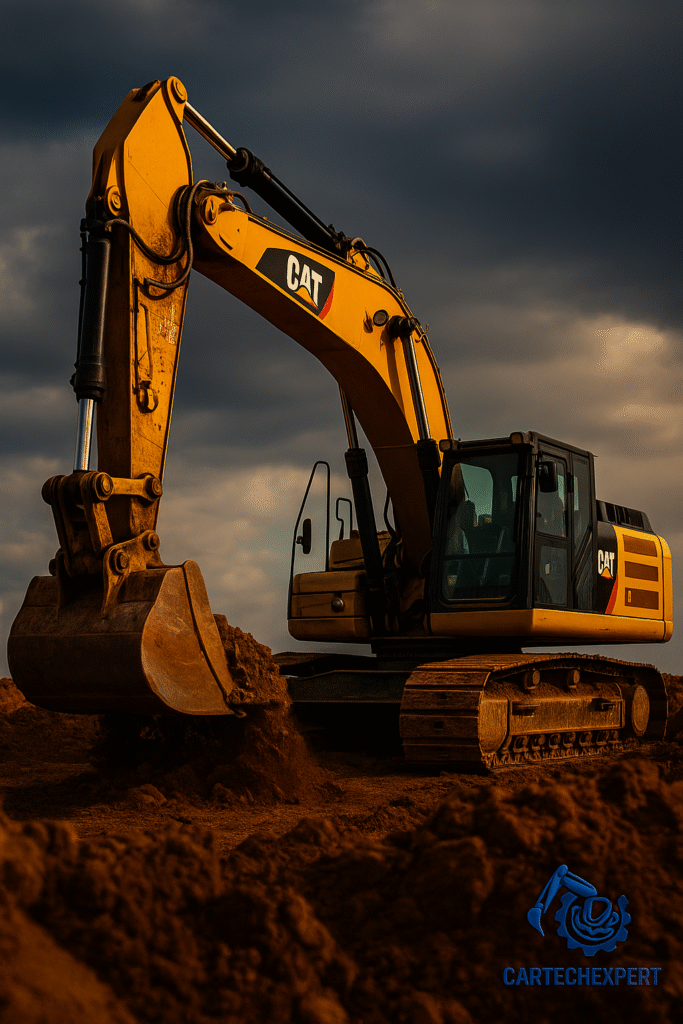Physical Address
Arthur Avenue , BrookField , ILLINOIS , 60513 , United State

When you think of heavy machinery, the first name that probably comes to mind is Caterpillar. From construction sites to mining operations, those familiar yellow machines have become symbols of strength and reliability. But behind that iconic color lies over a century of evolution — from steam-powered tractors to today’s smart, connected equipment driven by telematics and AI diagnostics.
As someone in the heavy equipment industry, you’ve likely depended on a CAT engine, hydraulic system, or diagnostic tool more times than you can count. Understanding how this brand transformed from a regional manufacturer into a global leader helps you see why Caterpillar continues to shape the future of off-road machinery.
The story begins in the late 1800s with two inventors: Benjamin Holt and C.L. Best. Holt created the first practical track-type tractor in 1904, using continuous tracks instead of wheels — an innovation that forever changed traction in muddy or soft terrain. Best, on the other hand, was developing competitive steam tractors.
In 1925, Holt Manufacturing Company and C.L. Best Tractor Co. merged, forming what we know today as Caterpillar Tractor Co. The merger symbolized the union of innovation and practicality — a trait that still defines CAT.
Through the 1930s and 1940s, Caterpillar quickly became the go-to brand for reliable earth-moving machinery. The introduction of the Diesel Sixty in 1931 revolutionized performance and fuel efficiency. By the 1950s, CAT had already begun global expansion, exporting machines to infrastructure projects worldwide.
Key milestones during this period:
CAT played a vital role during World War II, providing more than 50,000 machines to Allied forces. After the war, these same machines helped rebuild war-torn cities, laying the foundation for highways, airports, and industrial complexes across continents.
The company’s contribution wasn’t just in numbers — it was in reliability. Operators in harsh combat and post-war environments trusted CAT engines to start every time. This cemented Caterpillar’s reputation for toughness and dependability.
By the 1980s and 1990s, Caterpillar began integrating electronics into their machines. This era marked the birth of onboard diagnostics and telematics. With the introduction of systems like Product Link™, CAT allowed operators to monitor machine health, fuel usage, and productivity remotely.
Today, CAT’s telematics ecosystem provides real-time insights, predictive maintenance, and performance analytics that you can access from anywhere. This technology has set the standard for how OEMs handle equipment diagnostics and fleet management.
In 2025, CAT machines don’t just respond to problems — they predict them. AI and machine learning algorithms now analyze data from hundreds of sensors, detecting anomalies before they lead to downtime. This evolution connects directly with the concepts we discussed in our previous article on AI in Vehicle Diagnostics.
For you, this means:
| Brand | Founding Year | Signature Technology | Diagnostics & Telematics Integration | Global Market Strength |
|---|---|---|---|---|
| Caterpillar | 1925 | Product Link™, VisionLink®, Smart Diagnostics | Advanced AI-powered telematics with predictive maintenance | Strongest global presence, especially in North America |
| Komatsu | 1921 | KOMTRAX® remote monitoring | Highly efficient telematics; integrates well with fleet management | Dominant in Asia-Pacific and mining industries |
| Volvo CE | 1832 | CareTrack®, advanced fuel optimization systems | Balanced AI analytics; strong environmental focus | Leads in Europe and hybrid technology innovation |
Caterpillar’s success isn’t just about machines — it’s about people. The brand has built a culture of continuous improvement, safety, and sustainability. Every engineer and operator contributes to a shared goal: pushing the limits of productivity and reliability.
Looking forward, CAT is investing heavily in electric and hydrogen-powered equipment, as well as autonomous vehicles. The company’s ability to blend mechanical durability with digital intelligence ensures its continued dominance in the heavy equipment world.
Caterpillar’s journey from steam tractors to smart diagnostics is a story of adaptation, innovation, and resilience. If you operate or service heavy machinery, understanding CAT’s evolution gives you insights into the future of diagnostics, performance, and sustainability. It’s a history that continues to shape your daily work and the future of the entire industry.
Caterpillar was founded in 1925 through the merger of Holt Manufacturing and C.L. Best Tractor Company.
CAT’s commitment to innovation, reliability, and integrated telematics makes it a leader in heavy equipment technology.
CAT uses machine learning to analyze sensor data and predict failures before they occur, minimizing downtime.
Expect to see electric and autonomous heavy equipment powered by next-generation telematics and eco-friendly engines.
If you enjoyed this deep dive into Caterpillar’s history, check out these related articles:
For more expert resources, visit our main website: cartechexpert.com and don’t miss our online store for professional tools and diagnostic software: store.cartechexpert.com
